Visiting Tahiti instantly conjures up images of heaven on earth: over-water bungalows, bright hibiscus flowers, bronzed dancers, blue lagoons, and beastly waves. These 18 favourite Tahiti facts showcase its beauty, history, and culture (found outside of the honeymoon-marketed romance and Insta-filtered shots).
Because what’s travel without a little trivia to bust out when you’re sitting around the hostel common room! Tahitian people are vibrant and bursting and Tahiti’s culture reflects much the same excitement. It’s a magical little island with a lot of magical little secrets.
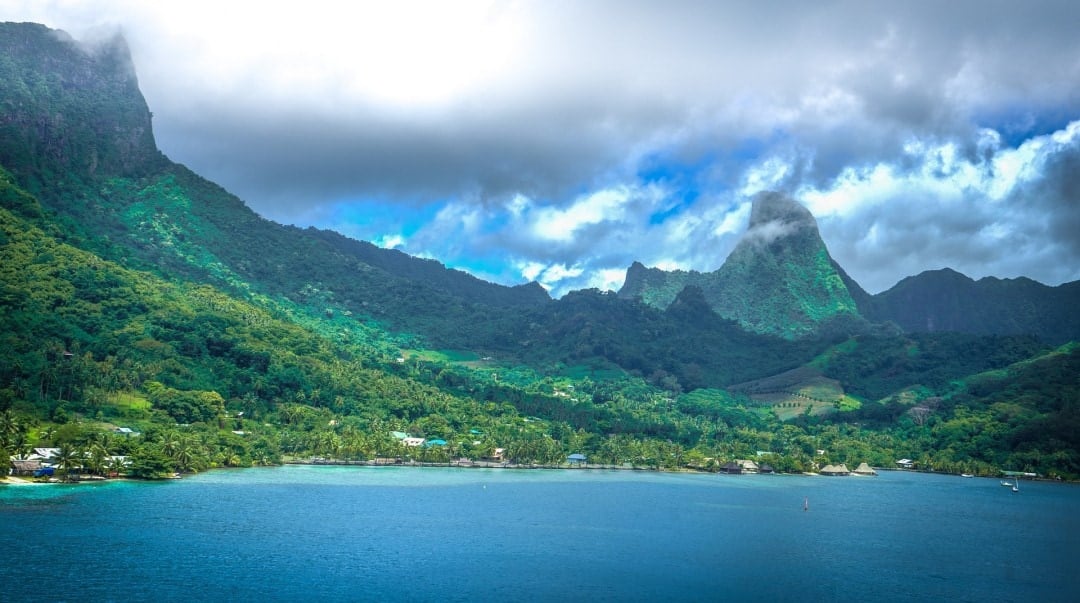
So, without further ado, here they are: 18 facts about Tahiti. Bust these suckers out to either impress or enlighten people. Maybe, you’ll just come across as a know-it-all double-hulled-douche-canoe. Either way, you’re learning!
18 Awesome Tahiti Facts
Yayyyy, learning!
1. The islands of Tahiti were among the last places on Earth to be settled by humans.
One of my favorite Tahiti facts is about its discovery in the first place.
Some 3,000 to 4,000 years ago, the Early Polynesians (probably from Taiwan or Southeast Asia) ditched their homes and sailed towards the blue horizon until they stumbled upon the Tahitian islands. Imagine throwing everything you own – chickens, dogs, children, and all – into a canoe and sailing into the vast Pacific Ocean with no end in sight. Tahiti’s people have been living there ever since.
2. Tahitian people journeyed through the Pacific Ocean aboard massive double-hulled outrigger canoes.
Tipairua is the name of a traditional canoe in Tahiti and they play an important role in the Tahititian people’s everyday culture. If you end up visiting Tahiti, definitely make sure to watch a tipairua race.
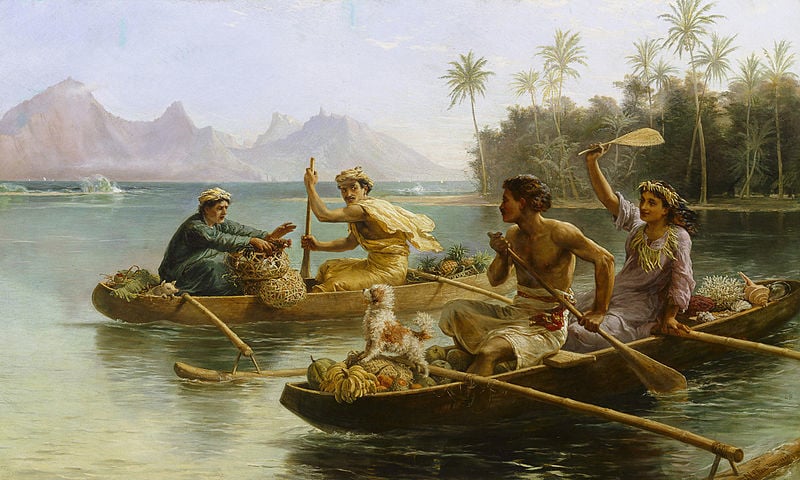
3. Early Polynesian people discovered the Tahitian Islands by celestial naviagation.
One of the most unique facts about Tahiti: Early Polynesians founded Tahiti through celestial navigations: reading cloud reflections, wave formations, bird flight patterns, and other aspects. Using these celestial measurements, ancient Polynesian people were able to discover Tahiti without the aid of more modern navigation.
While an important part of the history of Tahiti, this navigational method is now forgotten.
Where is Tahiti? Tahiti is a part of French Polynesia: a dispersed chain of 118 islands and atolls. French Polynesia spans across the vast Pacific Ocean thousands of kilometres from mainland Asia.
4. There is a theory that ancient South American and Tahitian cultures made some type of contact, despite thousands of miles of ocean between them.
This theory is held together because of one vegetable: the sweet potato. The sweet potato originates from Peru and Colombia, yet was found on the Tahitian islands sometime around 300 AD. This is hundreds of years before Europeans made contact with Tahitians. It is suggested that Polynesians travelled to South America and back, or South Americans brought it to the Pacific.
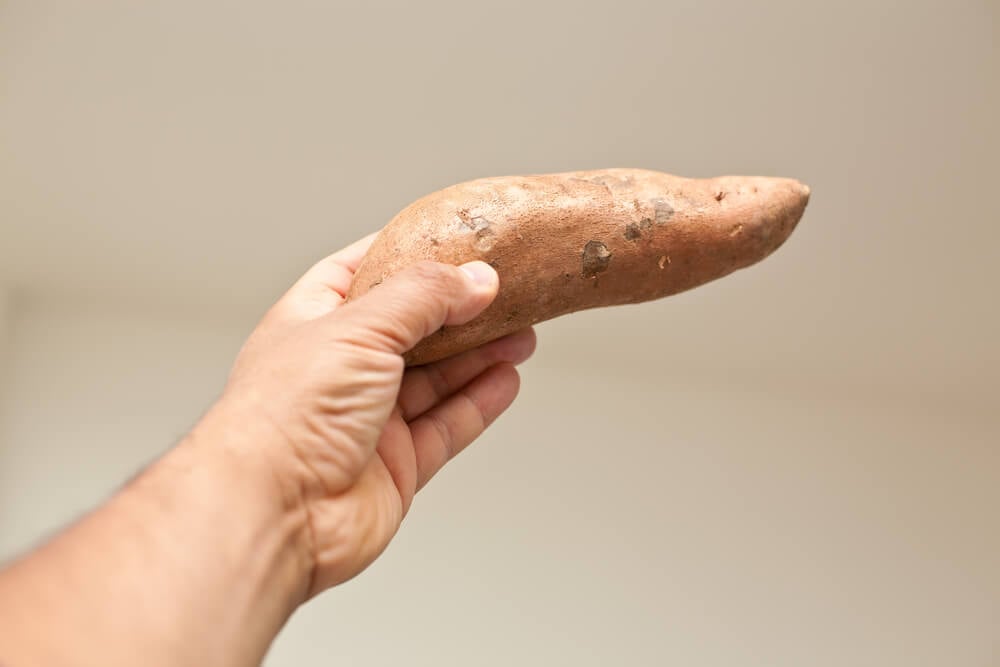
Moreover, in 2006, archaeologists discovered chicken bones in South-Central Chile that radiocarbon-dated to somewhere between 1304 and 1424, before Europeans discovered South America. Because chickens originate from Asia, this suggests that ancient South Pacific cultures had contact with South America.
Further genetic testing has since severed this link, however, leaving the Americas-Polynesia contact theory in a tenuous state.
5. Tahitians wear their national flower behind one’s ear to represent one’s relationship status.
One of the more fun Tahiti fact is about the symbolism of the tiaré. The tiaré is both a beautiful white flower and an interesting symbol of Tahiti culture. Both men and women wear a tiaré behind their left ear if they’re taken, and their right ear if they’re available.
6. There is no word for “please” in Tahitian.
There is no direct word for “please” because in Tahiti’s language because traditionally, in the culture of many Polynesians, almost everything was shared and there was no need for the word!
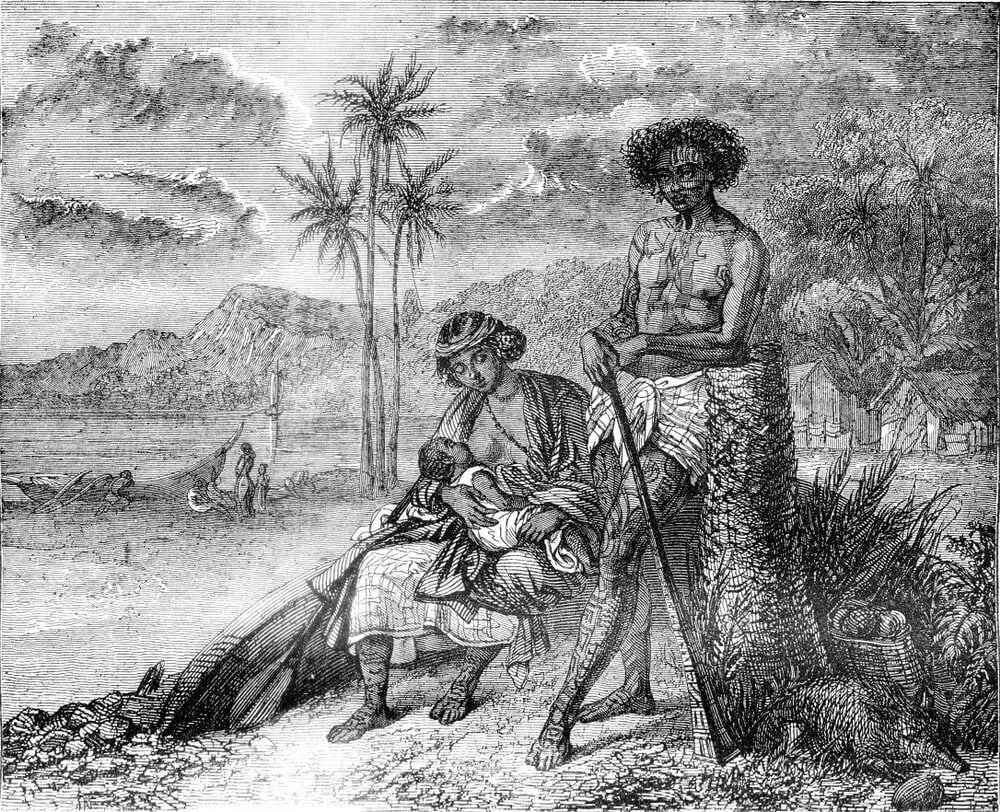
7. The Tahitian alphabet consists of 13 letters.
The Tahiti language consists of a 13 lettered alphabet. Its vowels are a, e, i, o, u, and its consonants are f, h, m, n, p, r, t, v.
Because the letter ‘B’ does not exist in the Tahiti language, Bora Bora is actually called Pora Pora (first-born), but Pora Pora is heard as Bora Bora when pronounced.
8. Tahitian dance and music is the cornerstone of their traditional culture.
Tahitian dance, called ori Tahiti, is not just a tourist attraction. Dance is a vibrant expression linked to many aspects of Tahitian life since ancient times. The history of Tahitian dance suggests that Tahitians dance for joy, sadness, to pray to a god, to challenge an enemy, and to seduce a mate.
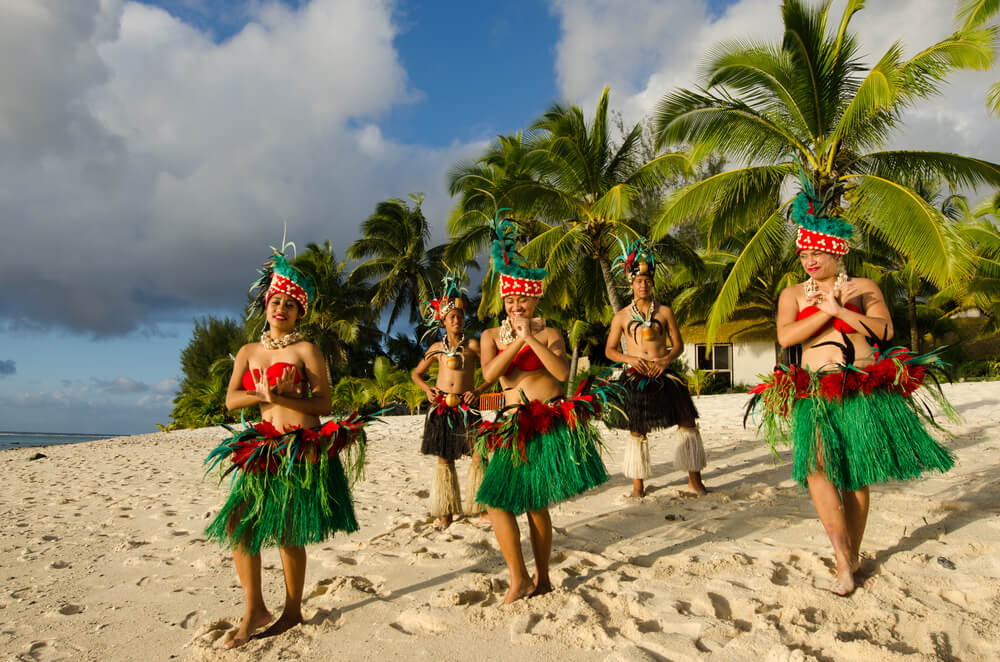
Modern Tahitian music combines contemporary Western melodies with the traditional nasal flutes, drums, and conch shells. Dance is still an integral tradition of the island Tahiti.
9. The word “tattoo” originates from the French Polynesian word “tatau”.
Another one of my favorite Tahiti facts is the legend of Tohu, the god of tattoo, who painted all the oceans’ fish in beautiful colours and patterns. In ancient times tattoos were significant symbols of social status and initiation rites as well as representations of community, geographic origin, family, and clan membership. Warriors also tattooed their faces to intimidate their enemies.
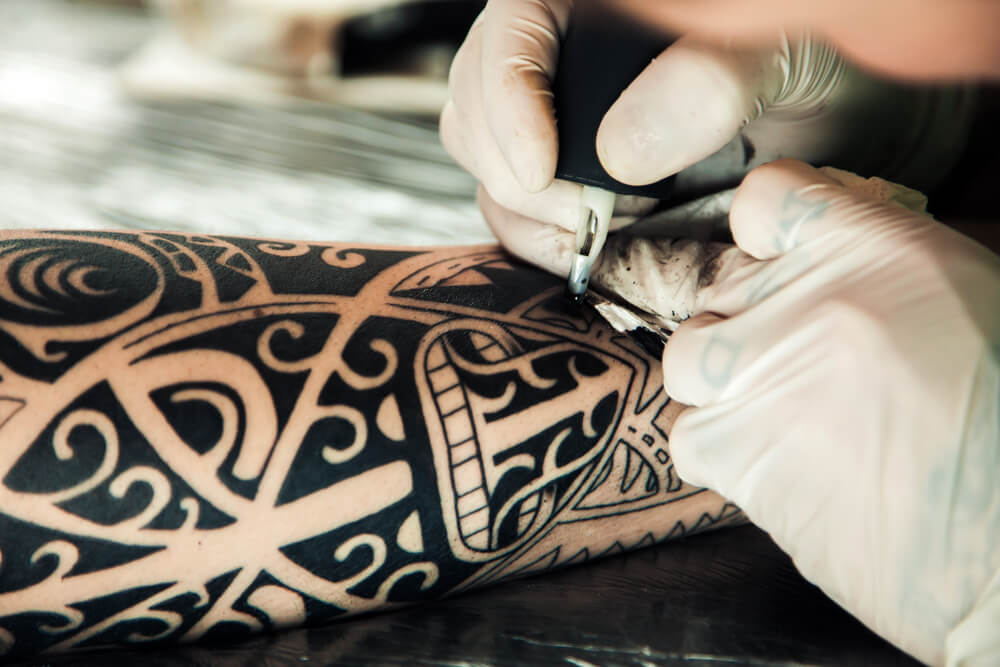
10. European settlement brought European problems to French Polynesia and Tahiti.
Not so much a Tahiti fact as a world fact, but influence by Europeans and colonisation by the French brought turmoil to the Tahitian people – go figure. Although today Tahiti enjoys a fairly stable economy and standard of living, the initial introduction of technology such as guns and alcohol, as well as many fatal diseases, wreaked havoc on the population of Tahiti.
Many Tahitian people died from the influx of smallpox, influenza, and typhus and – as in many indigenous cultures globally – effects of this interference still show.
Get insured before traveling to Tahiti!
Oh, shit, sorry guys. Was that a political opinion? Oops, my apologies; allow me to take the heat off of the destructive nature of Western influence in the East. Ad time!
Jokes aside, if you’re traveling, you should get insurance. Shit happens; just ask the Tahitians. They didn’t have insurance and look at what happened to them!
ALWAYS sort out your backpacker insurance before your trip. There’s plenty to choose from in that department, but a good place to start is Safety Wing.
They offer month-to-month payments, no lock-in contracts, and require absolutely no itineraries: that’s the exact kind of insurance long-term travellers and digital nomads need.
SafetyWing is cheap, easy, and admin-free: just sign up lickety-split so you can get back to it!
Click the button below to learn more about SafetyWing’s setup or read our insider review for the full tasty scoop.
11. Tahiti invented overwater bungalows.
One of the little known facts about Tahiti is that the world’s first overwater bungalows were constructed there in the 1960s… buuut not by the Tahitian people. It was three American dudes. Damn.
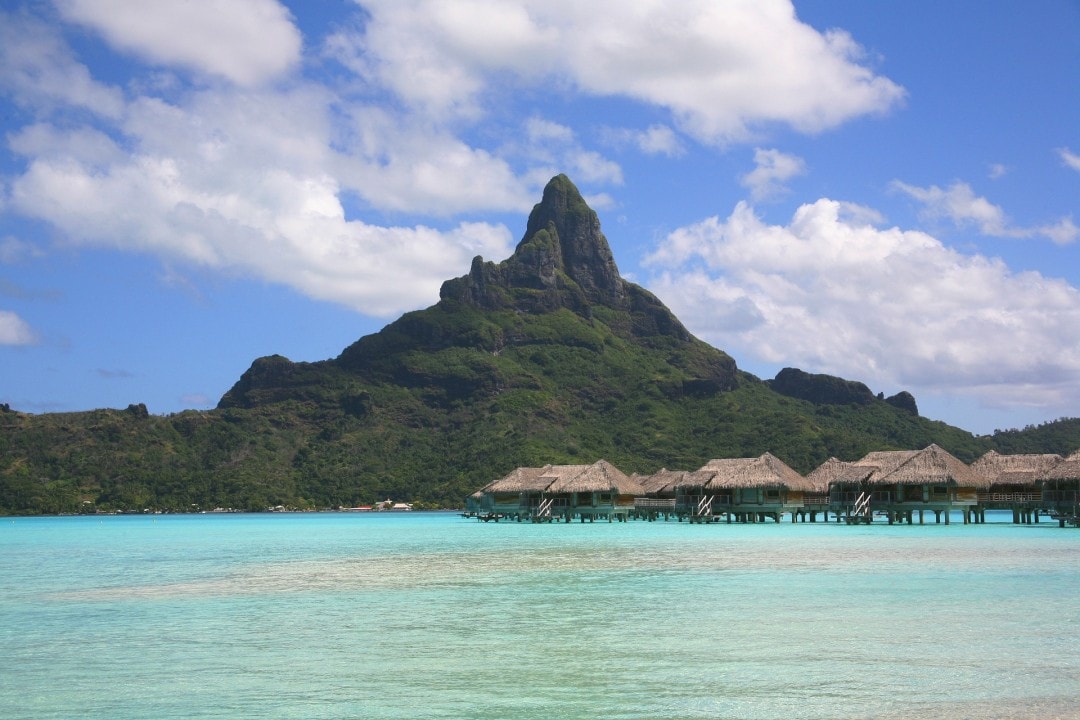
12. French Polynesians are tolerant, accepting people.
Gender politics be damned; here’s a crazy fact about Tahiti! In Tahiti (and other Polynesian culture), you’re likely to meet men, women and a third sex (mahu or raerae): men raised as girls.
Mahu are men who continue to behave and dress like women throughout their lives. The Tahitian people regard Mahus as people who combine the best of both the male and female gender. Raerae refers to more flamboyant transvestites and can be less accepted by society than mahu.
13. Hawaii receives more tourists in a day than Tahiti does in a year.
One of the more interesting facts about Tahiti is how little people visit Tahiti despite its immense beauty. Tahiti is one of the hardest places to reach in the world, but once you do you will be able to travel the island with relative ease and little crowds.
This kind of isolation makes backpacking French Polynesia a complete dream. Of course, you should go there! It’s goddamn spectacular!

We’ve tested countless backpacks over the years, but there’s one that has always been the best and remains the best buy for adventurers: the broke backpacker-approved Osprey Aether and Ariel series.
Want more deetz on why these packs are so damn perfect? Then read our comprehensive review for the inside scoop!
View on Osprey View on REI14. Polynesians like to eat and like to eat well.
Tahitians consume a lot of seafood, such as tuna, swordfish, korori (pearl oyster meat), and prawns. Their preferred meat is Pua (pork), and most chicken and beef is actually imported.
Vegetarians can easily find mangoes, avocados, papayas, bananas, and exotic fruit like soursop and star fruit throughout the islands.
A popular Tahitian dessert is poe, a sweet pudding made of taro root, flavoured with banana, vanilla, papaya, or pumpkin, and topped with coconut milk.
Tahiti demographics also suggest that Tahiti is one of the most obese countries in the world!
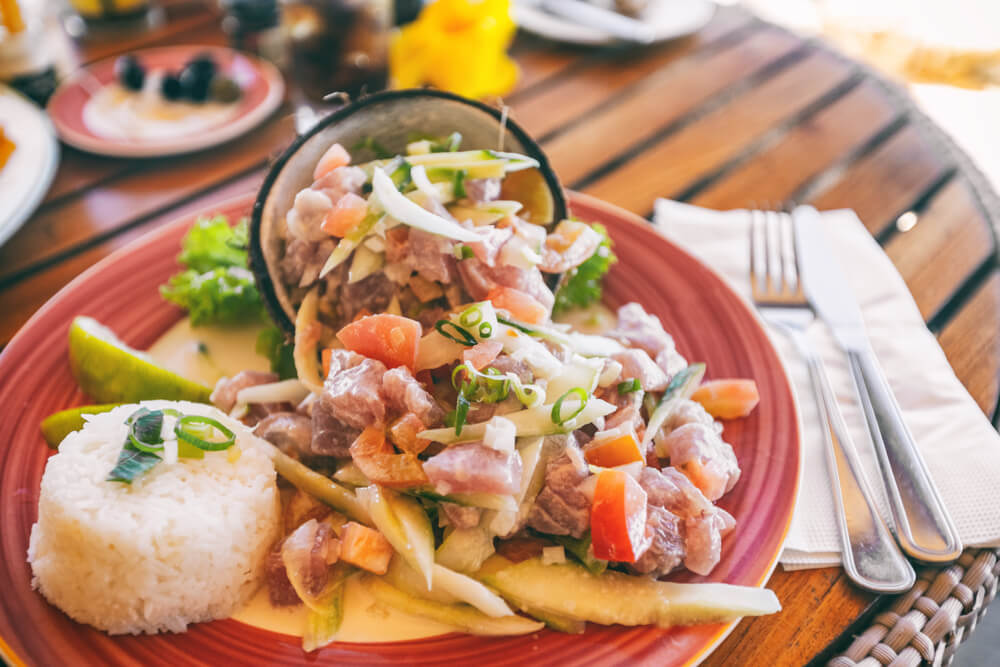
15. Va’a (outrigger canoe) racing is Tahiti’s national sport.
One of the many things to do in Tahiti is watching the pirogue (va’a) teams training on the lagoons. Be sure to catch the traditional races and festivities in October and November.
Other sports in Tahiti include amoraa ofae (rock lifting), and, of course, surfing! Tahiti’s surf is world-renowned and attracts carvers from all around the globe.
16. The official languages of Tahiti are French and Tahitian.
While Tahitians official languages are French and Tahitian, they also speak English on most of the islands.
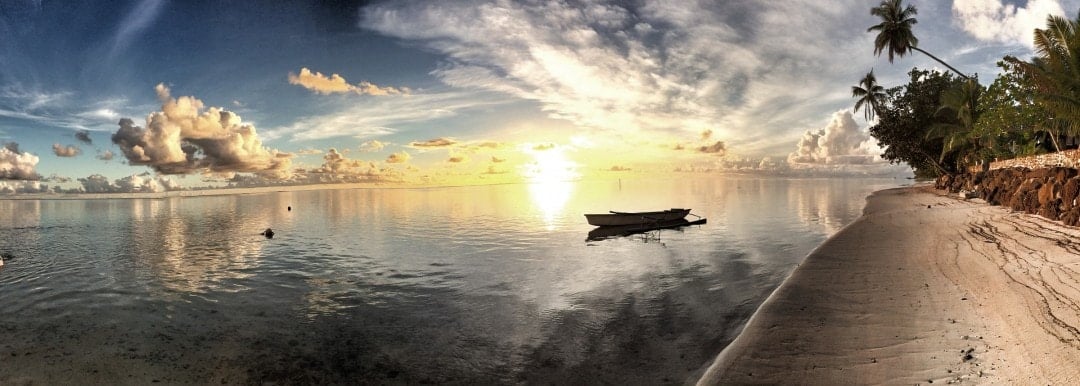
17. It should come as no surprise that most of Tahiti’s wildlife lives in the sea.
A few Tahiti facts about their wildlife:
- Anything that can’t swim, float, or fly was probably introduced to Tahiti Island.
- Tahiti snakes aren’t poisonous, and while you will see plenty of bugs – mosquitoes, flies, etc. – only one is poisonous: the centipede. Moreover, their centipedes can grow up to 20cm long and have venom-injecting fangs that cause swelling and pain for several hours.
- Your Tahiti travels would not be complete without exploring the underwater animal world. Under the sea, you will find hundreds of species of fish, manta rays, stingrays, moray eels, several species of sharks, and five of the seven species of sea turtles.
- Dolphins can be seen year-round, and Electra dolphins gather in groups of several hundred around Nuku Hiva, a phenomenon seen nowhere else in the world.

Drink water from ANYWHERE. The Grayl Geopress is the worlds leading filtered water bottle protecting you from all manner of waterborne nasties.
Single-use plastic bottles are a MASSIVE threat to marine life. Be a part of the solution and travel with a filter water bottle. Save money and the environment!
We’ve tested the Geopress rigorously from the icy heights of Pakistan to the tropical jungles of Bali, and can confirm: it’s the best water bottle you’ll ever buy!
View on REI Read the Review18. Tahiti’s capital is Papeete.
French Polynesia’s capital, Papeete, is the biggest city in Tahiti; however, it is not a large city. It’s more like a medium-sized town by Western standards.
Things to do in Papeete include:
- Shopping at the markets
- Eating at the street food – yay!
- And exploring the nightlife. Tahitians know how to boogie!
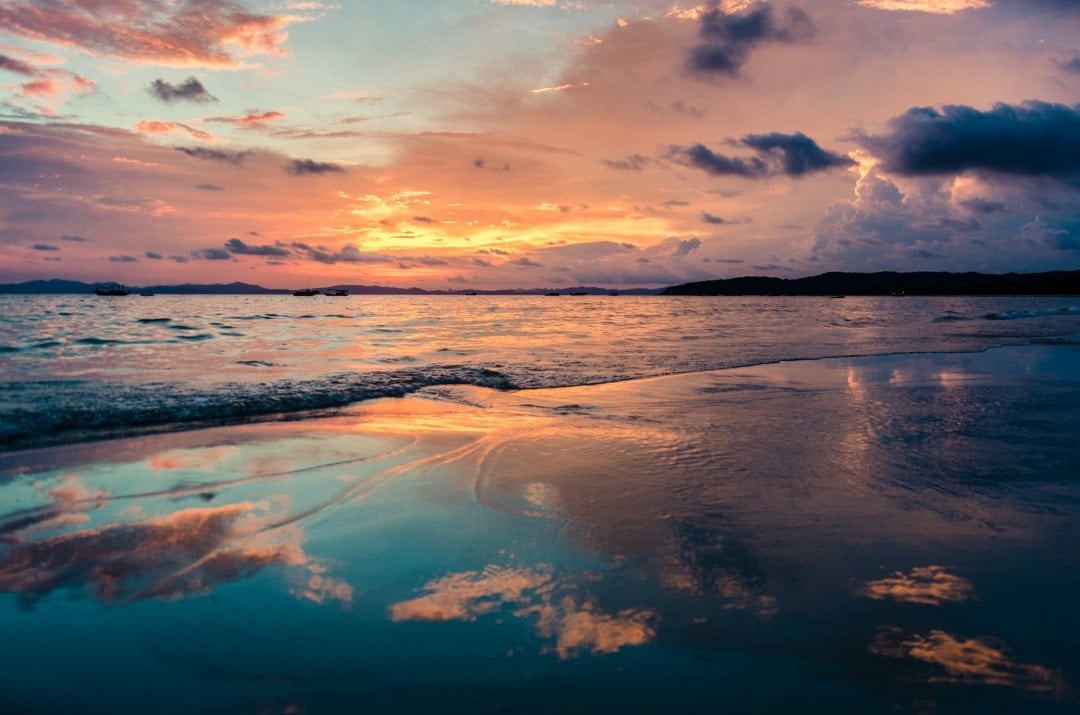
There’s Your Tahiti Facts Knowledge Bomb!
As you can see, there are tons of interesting facts about Tahiti! Polynesian cultures are truly fascinating and criminally unengaged with within the traveler community. The sad truth of many of these Pacific Island is that they’re only ventured to for a beach holiday with some pretty accompanying photos.
If these interesting facts about Tahiti left you intrigued in traveling there, I’d highly recommend you do, and possibly go on to other parts of French Polynesia. No matter where you stay around Tahiti, you’re bound to be greeted by friendly, local people and learn more about Polynesian history! The beautiful weather is an added bonus too.
Many of the places to visit in Tahiti can be expensive (like Bora Bora and Moorea), but there are many islands that guarantee backpackers can find raw beauty, empty beaches, and Tahiti nature, even on a budget. If these Tahiti facts inspire you to visit more of the South Pacific Islands, check out our ultimate Galapagos Islands Budget Travel Guide for some more majestic goodness.
Happy canoeing!
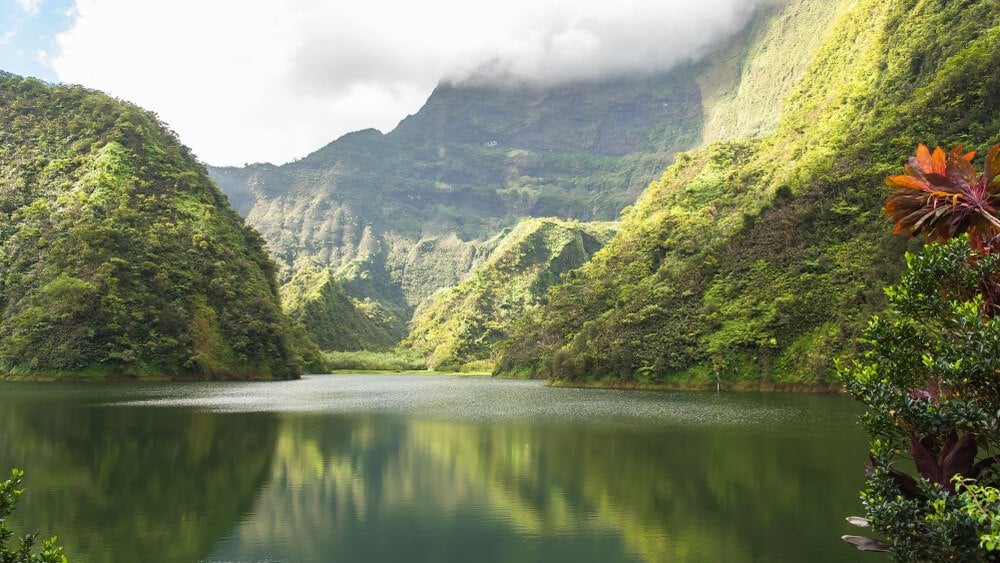
Updated: November 2019 by Ziggy Samuels at Zigz Writes Things.

And for transparency’s sake, please know that some of the links in our content are affiliate links. That means that if you book your accommodation, buy your gear, or sort your insurance through our link, we earn a small commission (at no extra cost to you). That said, we only link to the gear we trust and never recommend services we don’t believe are up to scratch. Again, thank you!




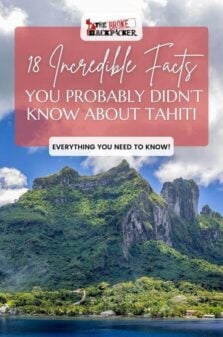


Are you seriously saying, that two Americans invented the overwater bungalows in 1960? So no other nation, no other culture has ever had overwater bungalows until these two dudes came along? I don’t know if your post is just bad wording, but that’s really ignorant and completely dismisses the ideas and work of others for centuries.
Hi A
Thanks for taking the time to comment.
Our writers did their research on this and there is quite a lot of sources suggesting that indeed, the over-water bungalow was invented by expats in Polynesia. If you have any information to the contrary, then do feel free to share it.
Aiden
I am mesmerized with such level of detailed information. My knowledge of Taihiti comes from the Taihitian pearl which I market, did not know this level of detail about the place.
Very good article, well documented. But there is only one official language in Tahiti which is French. Tahitian is the vernacular language.